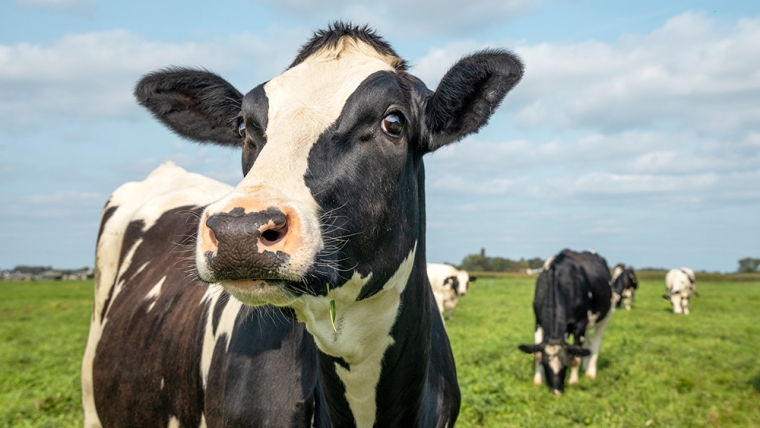
This content was supplied by Rabobank.
Weaker global milk demand set to push dairy commodity prices marginally lower in remainder of 2022 – global report Despite global milk production looking set to decrease for the fourth consecutive quarter in Q2 2022, weakening global demand is expected to create a scenario that will see moderate price declines in dairy commodities during the second half of the year, according to new global report by agribusiness banking specialist Rabobank.
In its latest Dairy Quarterly report – Are we there yet?, Rabobank says milk production in the “Big-7” dairy export regions (New Zealand, Australia, the EU, the US, Uruguay, Brazil and Argentina) has contracted year-on-year (YOY) for three consecutive quarters and is forecast to contract for a fourth consecutive quarter in quarter two 2022 — something which hasn’t happened since 2012-2013.
“The current slowdown in global milk output is directly related to higher costs of production and weather events. In the past, production has recovered and surpassed previous peaks, but now there are structural issues that could limit a significant rebound in production from some key exporters,” Rabobank senior analyst Emma Higgins said.
“Dairy herds in New Zealand and Europe have limited scope for growth and are more likely to contract under current and proposed regulations and environmental pressures. In South America, competition from grains and oilseeds for land and capital continues to intensify, limiting dairy expansions.
“Milk producers around the globe are facing higher corn and soybean prices, and weather disruptions are affecting certain regions, especially Oceania and South America. Overall inflation pressures in energy, fuel, and wages are also impacting profitability across the Big-7.”
Ms Higgins said the anticipated weak growth in milk supply was likely to be met by lower dairy demand across most regions over the coming months, as consumers feel the significant impact of inflation on their purchasing power.
“In the US and the EU, inflation is at a 40-year high, shocking consumers and impacting lower-income families disproportionately. In emerging markets, inflation is not new, but the severity of the current rise in prices, especially for commodity-importing countries, has been amplified by the effects of the war in Ukraine and a very strong dollar. However, high oil prices could support dairy import demand for some oil export countries, as seen in previous commodity cycles,” she said.
“Weakening consumer purchasing power is making it difficult for milk processors to pass increased production costs on to consumers. And in some regions, like the EU, some retailers continue to resist additional price hikes for some low-margin products.
New Zealand update
The report says New Zealand dairy farmers, like many farmers around the world, are juggling inflationary input cost pressures.
“We anticipate key input costs for dairy farming in New Zealand — fuel, fertiliser, feed, and labour – to remain elevated throughout 2022 and into 2023,” Ms Higgins said.
“Farm profitability remains likely for most New Zealand dairy farmers, but with a jump in their cost base for 2022/23, profit margins will be smaller than the previous season.”
As flagged in the bank’s New Zealand Dairy Seasonal Outlook report released in late May, Ms Higgins said the bank was forecasting $9.00/kgMS for the 2022/23 season.
“Our forecast for the new season remains unchanged, but we stress there are both considerable upside and downside factors to this price given the heightened uncertainty in the operating environment,” she said.
“In recent weeks we have seen geopolitical tensions — one of downside risks flagged in our Seasonal Outlook report — jump front and centre after China voiced their displeasure at New Zealand’s recent joint statement with the US that followed Prime Minister Ardern’s meeting with President Biden at the White House late last month.
“The statement was critical of China, and this has raised uncertainties over the ongoing trade relationship between the two countries.”
Ms Higgins said around 40 per cent of New Zealand’s dairy exports sail to China, its largest trading partner.
“China also relies heavily on New Zealand’s dairy imports, with nearly 90 per cent of China’s whole milk powder, 80 per cent of butter and fats, 40 per cent of skim milk powder and 60 per cent of cheese coming from New Zealand,” she said.
“In a worst-case scenario, the geopolitical tensions could further escalate leading to New Zealand, even temporarily, losing part or all of its Chinese market access. And this would be a huge blow to both countries and the wider global dairy market.”
A summary of all analysts' forecasts for both the 2021/22 and 2022/23 seasons is here.
Dairy prices
Select chart tabs
14 Comments
China is also working towards being self sufficient in dairy products they appear to be making good progress on that . Like it or not dairy has an image problem and that needs to be addressed or they will find more consumer resistance in developed countries, their more lucrative markets .
Yeah put about by self interested pollies. Shelter belts of hundreds of trees are not counted what a joke. Kyoto says not to do anything that reduces food production
It is not the Kyoto agreement; It is the Paris agreement! And the science of precision fermentation (to create plant based proteins) has made much further progress than the science of stopping cows bulching out CH4.
China is also working towards being self sufficient in dairy products they appear to be making good progress on that . Like it or not dairy has an image problem and that needs to be addressed or they will find more consumer resistance in developed countries, their more lucrative markets
Correct. Similar to how Japan developed, they have their own dairy companies that can produce their own dairy products. And their products have improved dramatically and are winning trust with Chinese consumers. Important to remember that dairy is a discretionary purchase in Asia, more than most NZers really understand.
Chinese consumption of dairy per person still less than one third of Rest of World
Demand growth will outstrip domestic supply growth for years yet
NZ still prefered supplier of powders and cheese ... future still looks very bright for NZ dairy
Chinese consumption of dairy per person still less than one third of Rest of World
Demand growth will outstrip domestic supply growth for years yet
NZ still prefered supplier of powders and cheese ... future still looks very bright for NZ dairy
I see. You think that Chinese people will adopt all the behaviors of Western culture. Maybe you're right. Anyway, what I can share with you is that Zespri's story about eating kiwifruit as part of a breakfast regimen has failed in Asia.
Maybe they are just eating the home grown ones...
https://www.nzherald.co.nz/the-country/news/china-has-more-gold-kiwifru…
Yes, you only have to have a look at some NZ dairy companies and see how many of them have a large percentage of Chinese ownership. They love NZ produced product.
Yes, you only have to have a look at some NZ dairy companies and see how many of them have a large percentage of Chinese ownership. They love NZ produced product.
This is not true. No NZ dairy 'branded product' has dominant market share in China, from infant formula to UHT milk to butter.
I didn't mention "dominant market share" or "branded product".
Rabobank still sticking with $9.00 forecast payout is a little surprising given NZX 2022/23 Milk Price Futures are trading comfortably above $10.00kgMS, last trade at $10.30.
We received a Fixed Milk Price offer from Fonterra earlier this week at $10.24 for a total of 15M kgMS ... applied for 160,000kg ... be interesting to see how heavily scaled we are.
Yes please let us know how you get on. I would be happy to lock in all my production at that figure if I had any.
You can't lock in all your production, usually only 50% of total production. If you fail to supply what you have contracted for you have to pay the processor.
We got our allotment letter yesterday from Fonterra ... we got 18,630kg of the 160,000kg applied for so every application was scaled by approx 88%.

We welcome your comments below. If you are not already registered, please register to comment
Remember we welcome robust, respectful and insightful debate. We don't welcome abusive or defamatory comments and will de-register those repeatedly making such comments. Our current comment policy is here.